Honda Civic Type R Vs Hyundai Veloster N: Fast Goodbye
The original 1997 Honda Civic Type R took a sensible city vehicle and made it into a track star.
It became a beacon for the performance front-wheel drive car. The Hyundai Veloster N is a relative newcomer, but one that doesn’t take its position lightly. Both offer up big performance in a small hatchback format, but the Veloster N beats the Type R on price and introduces a brand new eight-speed DCT for 2021.
Get a Quote on a New Honda Civic Type R or Hyundai Veloster NWhile we eagerly await the reveal of a brand new Civic Type R, we wanted to put the final iteration of the tenth generation for one last spin against its most comparable counterpart from Hyundai. Has the choice between the two gotten even more complicated? Editor Kyle Patrick and I take these two compact racers out for a drive to find out.
Interior and Cargo Space
Civic Type R: Red and black and Alcantara everywhere is what you notice as you drop yourself into the highly-bolstered bucket seats. The added red accents seem insignificant on their own, but as a whole they focus and elevate the car from its commuter siblings. The Alcantara-covered wheel is nice to look at and a pleasure to use, not to mention it would help with bitter winter mornings as there is no heated option. The seats are purpose-built which some will hate, but they do a great job of holding you in place as you turn up the lateral Gs. Build quality is typical of Honda (a good thing), but I could personally do without the carbon fiber-look trim pieces.
Interior noise is a slight mark on the Type R’s scorecard—cabin noise at cruise is usually a melange of tire, wind, and added in engine noise from the Active Sound Control that can sometimes get tiring, but we’re really just missing out on a satisfying exhaust note.
SEE ALSO: 2020 Mazda MX-5 Miata vs 2020 Toyota 86 ComparisonThe Civic has a very usable 25.7 cubic feet (727.47 L) of space in the rear cargo area that increases to 46.2 cubic feet (1308.24 L) when the rear seats are folded down. Rear leg room is comfortable at 35.9 inches (911.86 mm) and there is plenty of space for real people to sit in for an extended amount of time. We just wish it had kept the rear bench layout from the standard Civic to offer seating for five.
Veloster N: The Veloster looks more upscale than the Civic from the outside with its matte paint, but interior feels more budget. Without the blue “N” accents strewn around the interior, you’d be hard-pressed to tell the difference from a base model economy car. The blue seat belts and light-up “N” logos in the seats are fun, and the seats are much more comfortable for day-to-day use. I found the speedometer numbers too small to read at a quick glance, and could’ve used the HUD unit from other models in the Hyundai lineup. Kyle prefers the steering wheel in the Veloster while I like the Civic’s. At least we’re in agreement in saying it’d be no fun to have to crawl into the back seats and sit there for more than a trip to the drive-thru.
With the rear seats up, there is 19.9 cubic feet (563.5 L) of cargo space in the cargo area, which increases to 44.5 cubic feet when the seats are folded down. The hatch opening is less conducive for loading things into the back when compared to the Civic, but more importantly the loading height is noticeably higher.
SEE ALSO: 2021 Ford Mustang GT Convertible California Special Review: Cloudy with a Chance of (V8) ThunderBottom Line: The difference in pricing between the two is apparent once you open their doors. The Type R looks and feels more expensive, but is a bigger car and offers more usable space in both the rear seats and rear cargo area. If you’re used to driving solo or plus one and don’t take many trips down to the hardware store, the Veloster is a sleek alternative.
Tech and Features
Civic Type R: Honda didn’t bother to weigh down the Type R with a barrage of tech. The infotainment system runs on a 7.0-inch display and is very dated, so we’d just skip straight to using Apple CarPlay or Android Auto instead for media and navigation. Audio is handled by a 542-watt, 12 speakers/subwoofer system. There are no heated seats, no heated steering wheel, and no adjustable driving modes. The blind spot camera can be useful in urban settings, for example turning right at a red light to watch out for approaching bicyclists. It does require you to take your eyes off the road though, and I suspect many people might choose to ignore it altogether.
Veloster N: The Veloster fights back with a larger 8.0-inch display with a more modern infotainment system. Eight speakers make up the audio system, and heated front seats come standard with the Veloster N. This one feature alone gives the Veloster the edge over the Type R in colder climates. Blind spot monitoring and cross-traffic alerts are helpful given the limited visibility to the rear corners.
Bottom Line: The Type R is a drivers’ car through and through, and you’ll find no frills beyond what it needs to give you the best driving experience. The Veloster has more buttons you can press to make it a more comfortable car to live with in the long run, and it’s here in its features where it makes a case for itself over the Civic.
SEE ALSO: Honda Civic vs Hyundai Elantra ComparisonPowertrain, Driving Feel, and Fuel Economy
Civic Type R: A Type R just isn’t a Type R without an engine that has two moods. All the drama and theater of the 2.0-liter turbo four-cylinder comes alive beyond 3,500 rpm, when everything gets louder and moves faster. Kyle pins down this dual nature of the engine as the reason the Civic feels quicker than the Veloster, and how a hot hatch should be. This is an engine that feels more at home the closer it gets to redline.
The steering is heavy and direct, an homage to the old days of having nothing but your own muscles to help turn the car. Riding on 20-inch wheels and 245/30 tires, turn-in is sharp and there is tenacious grip around corners. The stiff chassis and quick directional changes makes the car feel smaller than it is. On the flip side, the thin tire sidewalls can make for a ride that’s harsh over unpolished urban roads, even on the Comfort setting. You’ll have to be keen on dodging potholes to avoid the thunk of a wheel hitting the ground and the accompanying all-is-lost feeling.
Kyle puts the shifter as one of the best on the market, and the clutch has a moderate weight with a short travel. Unlike the eight-speed, DCT-equipped Veloster however, the Civic is burdened with having only six gears. While it’s a lot of fun to make your way through each gear with a satisfying mechanical clunk, at highway cruising speeds we yearned for a seventh gear in the close-ratio gearbox just to drop down the revs and quiet the drone. Having to drive long distances above 2,500 rpm also has the side effect of making you hyper-aware of what the current gas price is. EPA ratings for city/highway/combined ratings are 22/28/25 mpg (10.5/8.4/9.6 L/100 km), but we had a hard time sticking to those numbers with how fun it was to put our foot down and get the revs up.
Veloster N: Whereas the Type R lives for the high revs, the Veloster puts down consistent power throughout the power band. Both use a turbo 2.0-liter four-cylinder, but you might be inclined to say the Hyundai engine feels more mature. The “go” is there when you need it, but it’ll drive as a commuter car when you don’t. Switch to Sport or N modes quicken engine response and open up the throaty exhaust note, but it never feels quite as quick as the Type R when it gets going. Kyle likes the introduction of the DCT to broaden the appeal of the Veloster N, but admits it may be more fun to drive with the standard six-speed manual transmission.
The Veloster also rides on smaller 19-inch wheels and offers more sidewall on 235/35 performance tires. The steering is much lighter than the Type R, the suspension is softer, and combined with the DCT makes for a distinctly more comfortable drive. You also get to fiddle with the drive mode settings by adjusting exhaust noise, throttle response, suspension stiffness, and driving aids to your liking. Even with an “Eco” mode included in the mix, it still shifts much higher up in the revs than we’d like for such a setting. EPA ratings with the DCT option are 20/27/22 mpg (12/8.6/10.5 L/100 km in Canada) for city/highway/combined respectively, but in our testing we were less likely to rev the Veloster as high and got slightly better numbers than we did with the Type R.
Bottom Line: Either car will demand more attentiveness from you as a driver, but the Type R insists on it constantly. You’re choosing between a more comfortable car that has the ability to go fast when you want in the Veloster N, or one that reminds you it’s fast all the time by screaming in your face with the Civic Type R. Kyle likes the softer performance envelope of the Veloster with the DCT and I won’t disagree, but we both know the Type R would be hard to beat in a head-to-head six-speed battle.
Safety
Civic Type R: All Type Rs come equipped with the current Honda Sensing Suite of safety features. Collision Mitigation Braking System (CMBS) automatically applies the brakes when it senses an impending collision. Road Departure Mitigation System (RDM) and Lane Keeping Assist System (LKAS) both work to keep you in your lane and Adaptive Cruise Control (ACC) helps to maintain a set interval behind a leading vehicle.
The Type R has not been crash-tested by the NHTSA, but the standard 2021 Civic Hatchback aced every category and has a 5-star overall safety rating. The IIHS also gave the standard Civic Hatchback a “Top Safety Pick Award” with “good” ratings across the board and a “superior” rating for front crash prevention.
Veloster N: Hyundai offers an equally extensive list of active safety features as standard; forward-collision avoidance, rear cross-traffic collision warning, lane assistant and departure warning, and blind-spot collision warning all work to help you prevent an insurance claim. Driver Attention Warning and Pedestrian Detection are unique to the Hyundai and slightly one-ups the Civic.
The 2021 Veloster is also a “Top Safety Pick” from the IIHS, receiving “good” ratings in all crashworthiness categories but an “acceptable” for the LED headlights that are standard on the N. As of writing, the 2021 Veloster has not been tested by the NHTSA.
Bottom Line: Both cars received gleaming safety ratings and we’d feel just as safe running through the gears in either car. Hyundai’s added Driver Attention Warning may be a boon to some, but in practise our attention never dwindled enough while driving a hot hatch to really make use of such a feature.
SEE ALSO: 2020 Honda Civic Type R vs 2020 Mercedes-AMG A 35 ComparisonStyling
Civic Type R: For 2021, Honda carries over minor changes made to the front and rear bumpers from the 2020 rendition of the Type R. At this point, there isn’t much anyone can do to diminish the polarizing nature of the styling. It is still a lot to take in, but the gray paint on our test car helps to slightly subdue the visual attack. The large wing is the loudest design element on the car, but once in the driver’s seat it tucks neatly away from view and does not obstruct vision to the rear. Gloss black twenty-inch alloys with a red accent stripe are appropriately angular and the only wheels available.
It’s easy enough to mark the design language as juvenile, but both Kyle and myself like the excess on the Type R. The car just looks fast, and feels special both walking up to it and away from it. How a series of vents and vortex generators can awaken a childlike frivolity is beyond us, but we appreciate it.
Veloster N: The styling additions on the N are not as huge of a departure from the standard Veloster as compared to the Type R and its pedestrian counterpart. Red-accented exterior bits and spoiler make a relatively subdued but distinct enhancement and effectively marks the N as the sporty variant. The “Shooting Star” matte black paint looks premium, but also requires a strict maintenance regimen.
Kyle prefers the more svelte and asymmetrical shape of the Veloster, especially from the three-quarter rear angle where chunky rear wheel arches and wide track are accented. We both agree the dotted LEDs in the headlights do a lot to age the car.
Bottom Line: The two sit at opposite poles in the styling department. One sidles into the traffic flow while the other screams at everyone unsolicited on the street. Do you want to be a shouter or a sidler?
Pricing and Value
Civic Type R: The 2021 Type R is priced from $37,895 plus a $1,015 destination charge ($46,200 CAD plus $1,700 freight and PDI). Aside from premium color options ($395), all Type Rs are identically equipped with the 2.0-liter turbo engine, six-speed manual transmission, and the Honda Sensing suite of active safety features. They’re all sold out in Canada, though, so good luck if you want one.
Veloster N: Like the Civic, the Veloster N does not have much in the way of an options list. If you would prefer to shift a Veloster N the old fashioned way, the six-speed manual is priced from $33,245 including freight ($39,524 CAD). Swapping in the eight-speed dual-clutch transmission will add $1,500 ($1,600 CAD) to the bill. Either transmission option will come attached to the 2.0-liter turbo, but you can pay just a bit more for premium paint options.
Bottom Line: With almost no add-on options on either car, both hot hatches are take-them-as-they-are. The Veloster N undercuts the Type R by a noticeable amount however, even when equipped with the DCT. Given how unlikely it is that you’ll actually come across a Type R being sold for MSRP, the Veloster N presents as a much more readily-available value buy.
SEE ALSO: 2019 Hyundai Veloster N: I’m Not a Regular Dad, I’m a Cool DadVerdict: Honda Civic Type R vs. Hyundai Veloster N
Harry: It’s a classic two sides of the same coin scenario — The Civic Type R and Veloster N are two cars that share in the same segment but which are very different. The Type R, with its mandatory six-speed, demands your every attention on the road, but rewards you with a top-notch driving experience. The Veloster N with the new eight-speed DCT on the other hand is an easy car to get in and go for just about anyone. Both will satisfy a heavy right foot and work the smirking muscles on your face.
There is no wrong choice here. Either car fulfills the hot hatch blueprint of being both usable and a joy to drive. For my pick, I’m going with the Type R. Every time it comes into view I’m given a reminder of Honda’s lineage of Type R products, and every drive became a journey I looked forward to.
Kyle: It’s sad to say goodbye to the Civic. Even now, four years on from its debut, it’s a single-minded joy to drive. One of the best shifters in the game, seats that mean business, and a purity of purpose that puts this hot hatch on par with the very best the world has to offer. But that makes it the tougher one to live with day-to-day. It can schlep around town if it must, but the nuggety ride serves as a constant reminder of where it’d rather be.
Not that the Veloster N is some sort of shrinking violet. That exhaust note is as enjoyable as it is anti-social—maybe even because of that. The Veloster does a better job of relaxing, if only slightly, to toil through the mundane parts of life without punishing you as much. At full clip it gives up very little to the Type R. And then there’s the value play—though spend even a minute touching any part of the Veloster’s dashboard and you know where dollars were saved. But isn’t affordability a key part of the hot hatch recipe?
Money no object? I’d probably still go Type R. It’s a reminder of everything that made Honda synonymous with the import tuner scene over three decades ago. The Veloster is a worthy opponent though, and one that can easily carry the hot hatch torch until the next Type R arrives. Bring on the rematch.
Become an AutoGuide insider. Get the latest from the automotive world first by subscribing to our newsletter here.
More by Harry Zhou







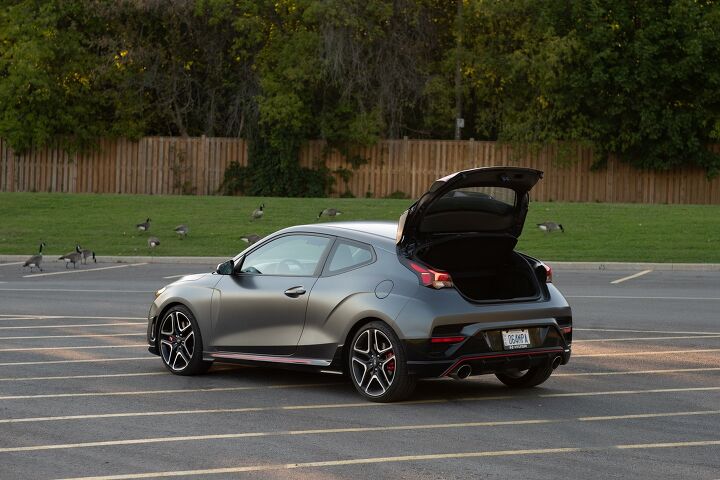




























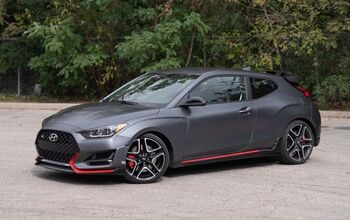
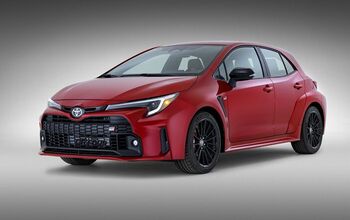
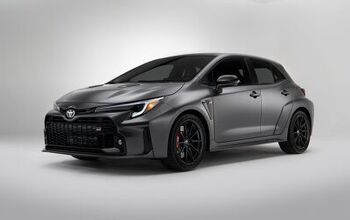

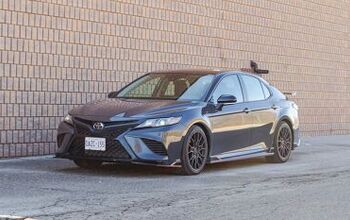





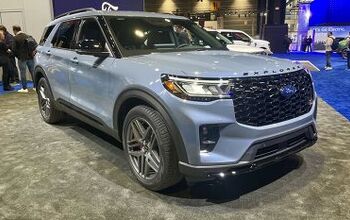

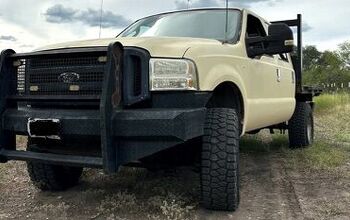
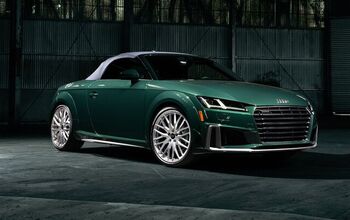
Comments
Join the conversation
I love the sound of the Veloster N, it sounds pretty ragged but very cool!